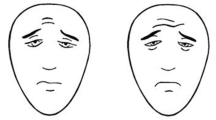Abstract
Objective. To compare the Faces Pain Scale and Color Analogue Scale among children aged 6–12 years undergoing selected procedures (Venipuncture, Intravenous cannulation, Intramuscular injection, Lumbar puncture, Bone marrow aspiration) and to compare the procedural pain in a child as perceived by the child, parents and health care professionals using the above mentioned scales
Methods. This was a prospective, descriptive correlational study of children aged 6–12 years, who had undergone selected procedures. Children were assessed for their pain severity using Faces Pain Scale and Color Analogue Scale. Parents and health care professionals also independently assessed the child's pain using the same scales
Results. 181 children who fulfilled the eligibility criteria were enrolled in the study. There was a significant positive correlation (r = >0.8) between both the pain scales. There was fair to moderate positive correlation (r = 0.29 to 0.58) of pain perception of child with parents and health care professionals
Conclusions. Faces Pain Scale and Color Analogue Scales seem to be appropriate instruments for measuring pain intensity among Indian children aged 6–12 years undergoing selected procedures
Similar content being viewed by others
References
McCaffery M, Passero C. Pain: Clinical Manual, 2nd ed. Philadelphia: Mosby; 1999.
Merskey H. Pain terms: A list with definitions and notes on usage: recommended by the IASP Subcommittee on Taxonomy. Pain 1979; 6: 249–250.
Weissman SJ, Bernstein B, Schechter NL. Consequences of inadequate analgesia during painful procedures in children. Arch Pediatr Adolesc Med 1998; 152: 147–149.
McGrath PA, Unruh AM, Finley GA. Pain measurement in children. Available from http://www.med.start.com/pedsneonatal.html. Accessed January 14, 2006.
American Academy of Pediatrics, Committee on psychosocial aspects of child and family health: The assessment and management of acute pain in infants, children and adolescents. Pediatrics 2001; 108: 793–797.
Royal College of Nursing. Guidelines for good practice: Recognition and assessment of acute pain in children. Available at: http://www.rcn.org.uk. Accessed January 30, 2006.
Wong DL, Baker CM. Pain in children: comparison of assessment scales. Pediatr Nurs 1988; 14: 9–10.
McGrath PA, Seifert CE, Speechley KN, Booth JC, Stitt L, Gibson MC. A new analogue scale for assessing children;s pain: an initial validation study. Pain 1996; 64: 435–443.
Manne S, Jacobsen PB, Redd W. Assessment of acute paediatric pain: do child self-report, parent ratings and nurse ratings measure the same phenomenon? Pain 1992; 48: 45–52.
Chambers CT, Giesbrecht K, Craig KD, Bennett SM, Huntsman E. A comparison of faces scales for the measurement of pediatric pain: children’s and parents’ ratings. Pain 1999; 83: 25–35.
Miller D. Comparisons of pain ratings from postoperative children, their mothers, and their nurses. Pediatr Nurs 1996; 22: 145–149.
Schneider EM, LoBiodo-Wood G. Perceptions of procedural pain: parents, nurses, and children. Child Health Care 1992; 21: 157–162.
Finley GA, McGrath PJ, Forward SP, McNeill G, Fitzgerald. Parents’ management of children’s pain following’ minor’ surgery. Pain 1996; 64: 83–87.
Bellman MH, Paley CE. Parents underestimate childrens pain. Br Med J 1993; 307: 1563–1565.
Lollar DJ, Smits SJ, Patterson DL. Assessment of pediatric pain: an empirical perspective. J Pediatr Psychol 1982; 7: 267–277.
Zernikow B, Meyerhoff U, Michel E, Wiesel T, Hasan C, Janssen G et al. Pain in pediatric oncology — Children’s and parents’ perspectives. Eur J Pain 2005; 9: 395–406.
Author information
Authors and Affiliations
Corresponding author
Rights and permissions
About this article
Cite this article
Subhashini, L., Vatsa, M. & Lodha, R. Comparison of two pain scales in indian children. Indian J Pediatr 75, 891–894 (2008). https://doi.org/10.1007/s12098-008-0096-4
Received:
Accepted:
Published:
Issue Date:
DOI: https://doi.org/10.1007/s12098-008-0096-4




